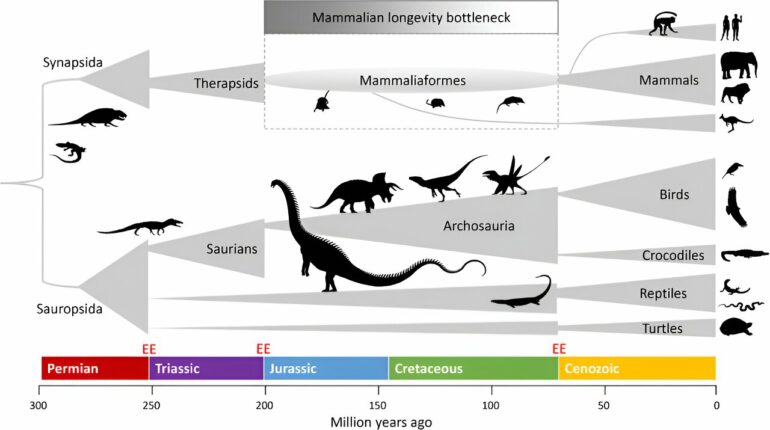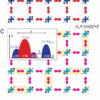Researchers have discovered magnetic monopoles—isolated magnetic charges—in a material closely related to rust, a result that could be used to power greener and faster computing technologies.
Researchers led by the University of Cambridge used a technique known as diamond quantum sensing to observe swirling textures and faint magnetic signals on the surface of hematite, a type of iron oxide.
The researchers observed that magnetic monopoles in hematite emerge through the collective behavior of many spins (the angular momentum of a particle). These monopoles glide across the swirling textures on the surface of the hematite like tiny hockey pucks of magnetic charge. This is the first time that naturally occurring emergent monopoles have been observed experimentally.
The research has also shown the direct connection between the previously hidden swirling textures and the magnetic charges of materials like hematite as if there is a secret code linking them together. The results, which could be useful in enabling next-generation logic and memory applications, are reported in the journal Nature Materials.
According to the equations of James Clerk Maxwell, a giant of Cambridge physics, magnetic objects, whether a fridge magnet or the Earth itself, must always exist as a pair of magnetic poles that cannot be isolated.
“The magnets we use every day have two poles: north and south,” said Professor Mete Atatüre, who led the research. “In the 19th century, it was hypothesized that monopoles could exist. But in one of his foundational equations for the study of electromagnetism, James Clerk Maxwell disagreed.”
Atatüre is Head of Cambridge’s Cavendish Laboratory, a position once held by Maxwell himself. “If monopoles did exist, and we were able to isolate them, it would be like finding a missing puzzle piece that was assumed to be lost,” he said.
About 15 years ago, scientists suggested how monopoles could exist in a magnetic material. This theoretical result relied on the extreme separation of the north and south poles so that, locally, each pole appeared isolated in an exotic material called spin ice.
However, there is an alternative strategy to find monopoles involving the concept of emergence. The idea of emergence is the combination of many physical entities that can give rise to properties that are either more than or different from the sum of their parts.
Working with colleagues from the University of Oxford and the National University of Singapore, the Cambridge researchers used emergence to uncover monopoles spread over two-dimensional space, gliding across the swirling textures on the surface of a magnetic material.
The swirling topological textures are found in two main types of materials: ferromagnets and antiferromagnets. Of the two, antiferromagnets are more stable than ferromagnets, but they are more difficult to study as they don’t have a strong magnetic signature.
To study the behavior of antiferromagnets, Atatüre, and his colleagues use an imaging technique known as diamond quantum magnetometry. This technique uses a single spin—the inherent angular momentum of an electron—in a diamond needle to precisely measure the magnetic field on the surface of a material, without affecting its behavior.
For the current study, the researchers used the technique to look at hematite, an antiferromagnetic iron oxide material. To their surprise, they found hidden patterns of magnetic charges within hematite, including monopoles, dipoles, and quadrupoles.
“Monopoles had been predicted theoretically, but this is the first time we’ve actually seen a two-dimensional monopole in a naturally occurring magnet,” said co-author Professor Paolo Radaelli from the University of Oxford.
“These monopoles are a collective state of many spins that twirl around a singularity rather than a single fixed particle, so they emerge through many-body interactions. The result is a tiny, localized stable particle with diverging magnetic field coming out of it,” said co-first author Dr. Hariom Jani, from the University of Oxford.
“We’ve shown how diamond quantum magnetometry could be used to unravel the mysterious behavior of magnetism in two-dimensional quantum materials, which could open up new fields of study in this area,” said co-first author Dr. Anthony Tan from the Cavendish Laboratory. “The challenge has always been direct imaging of these textures in antiferromagnets due to their weaker magnetic pull, but now we’re able to do so with a nice combination of diamonds and rust.”
The study not only highlights the potential of diamond quantum magnetometry but also underscores its capacity to uncover and investigate hidden magnetic phenomena in quantum materials. If controlled, these swirling textures dressed in magnetic charges could power super-fast and energy-efficient computer memory logic.
More information:
Mete Atatüre et al, Revealing Emergent Magnetic Charge in an Antiferromagnet with Diamond Quantum Magnetometry, Nature Materials (2023). DOI: 10.1038/s41563-023-01737-4. On arXiv: DOI: 10.48550/arxiv.2303.12125
Provided by
University of Cambridge
Citation:
Diamonds and rust help unveil ‘impossible’ quasi-particles (2023, December 5)



